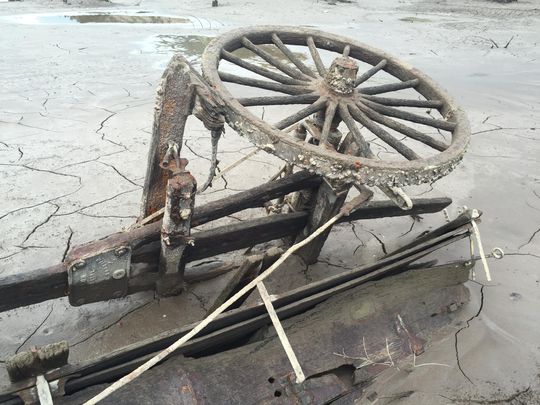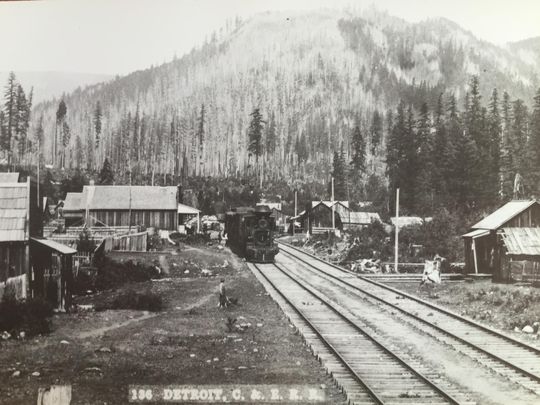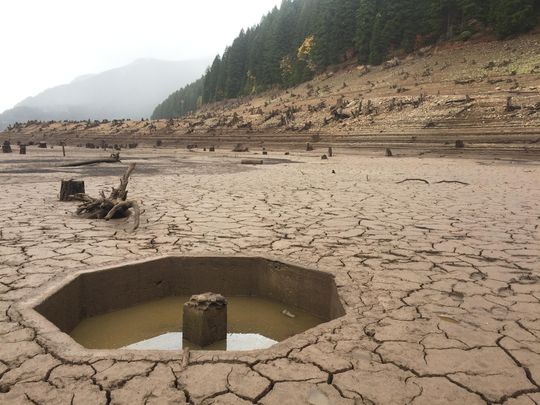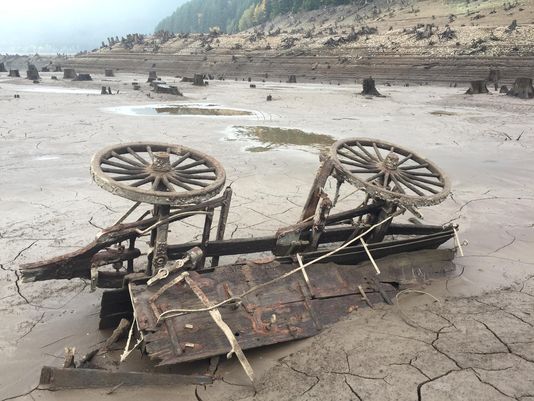Under Detroit Lake, which had record low water levels in October 2015 – the abandoned town of Old Detroit has reemerged. Marion County Sheriff’s Deputy Dave Zahn is one of a few people who spotted a 19th-century utility wagon lying lakeside in the mud.
At the time, Detroit Lake was 143 feet below capacity. He went to Oregon’s Detroit Lake to take pictures of Old Detroit, the 200-person town abandoned and flooded in the 1950s after the Detroit Dam was built.
“In late October when the lake was at its lowest I took the opportunity to walk the river line to see what’s out there, more of a treasure hunt,” Zahn says. “I went on a treasure hunt down along the river, figuring I’d find foundations or something like that. Then I saw a piece of old history right there.”

The 200-person town Old Detroit existed from 1880 to 1952, when it was abandoned in preparation for the construction of a new dam that would flood the area, creating the reservoir called Detroit Lake.
Every winter, when the spillways of the Detroit dam are opened to make room for spring snowmelt, parts of the old town become visible above the water.

The low oxygen levels at the bottom of the lake kept the wagon in pristine condition. But there is no record of the wagon ever being discovered before, and the water levels haven’t been as low as they were in October 2015 since 1969.
“As far as I know, the wagon’s never been seen until this year,” said U.S. Forest Service archaeologist Cara Kelly. “Either the lake water never fell below it, no one noticed or mentioned it, or it migrated with the currents from somewhere else.“
The wagon was discovered along with a nearby concrete octagonal pit that has yet to be identified.

Cara Kelly told the Statesman Journal that the wagon was probably damaged more in the weeks that it has been on land than in the decades it has lurked underwater.
Kelly asked that the wagon’s exact location be kept secret to protect it from vandals.
“Preserved beneath the reservoir’s waves in a low-oxygen environment, the wagon was probably more damaged during its short public appearance than it was underwater for decades,“ she said. “I don’t think people realize they aren’t supposed to collect items off public land.
But once someone removes something, nobody else will get to see that piece of history.”
“This might not have been its original resting place,” she said. “It could’ve come from anywhere in the town of Detroit or even up the drainage.
The flood of 1964 moved a lot of things; it even brought houses down. The lake was just covered with logs and debris back then.”
It could be decades before Detroit Lake’s water levels fall that low again.
